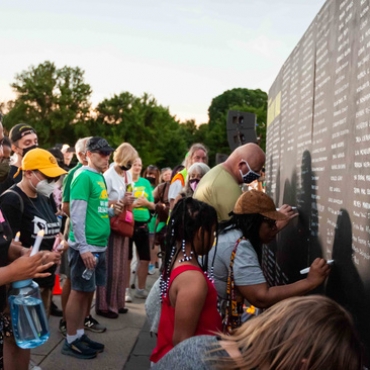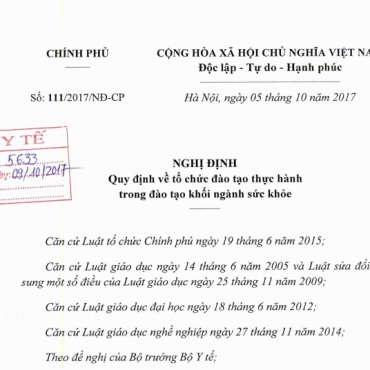Liên hệ tuyển sinh
Hợp tác Quốc tế
Can Endos Use Social Media Safely?
This transcript has been edited for clarity. https://www.medscape.com/viewarticle/997439?ecd=mkm_mscpapp_231209_mscpmrk_podcasts_non-app_etid6139155&uac=438877EJ&impID=6139155#vp_4
Kaniksha Desai, MD: Welcome to the Thyroid Stimulating Podcast. This podcast was created in partnership with the American Thyroid Association to discuss up-to-date diagnosis and management of a wide array of thyroid diseases. Today, we're diving deep into the topic that's rapidly evolving in the world of medicine, which is the use of media by physicians for patient and physician education.
In this digital age where information is just a click away, physicians are increasingly leveraging various media platforms to stay informed, educate their patients, and enhance their own knowledge.
From social media platforms such as X (previously Twitter) and Instagram to podcasts, webinars, and even interactive apps, the ways in which doctors assess and share information has expanded tremendously. But with this wealth of information also comes a responsibility to ensure accuracy, relevance, and ethics in disseminating the medical knowledge.
In this episode, we'll explore the multifaceted role of media in modern healthcare. We'll hear from an expert in the field, Dr Malini Gupta, the founder of G2Endo, as our guest. She earned her bachelor of arts and science degrees from Washington University in St. Louis, and then embarked on a global medical education at the University College Cork School of Medicine in Cork, Ireland.
She then went on to complete her residency in internal medicine followed by a fellowship in endocrinology at University of Tennessee Health Science Center. In the summer of 2020, during the height of the pandemic, she pursued a certificate in media and medicine at Harvard Medical School.
She not only excels in her private practice but also actively contributes to the medical community in various capacities. She is an active member in the American Thyroid Association, where she sits on the Internet and Social Media Communications Committee.
She is also a national speaker and writer on various endocrine topics, sharing her knowledge and insight with a broader audience. She recently spoke at our annual American Thyroid Association meeting in September 2023 on the use of Instagram for thyroidologists.
In addition to her impressive medical accomplishments and community involvement, Dr Gupta has found a unique and creative way to promote awareness about endocrinologic diseases. Her innovative approach combines her medical knowledge with artistic expression to share awareness and educate the public.
Her use of art not only engages audiences on a visual level but also provides a unique perspective on these often intricate medical conditions. With such a rich and diverse background, Dr Gupta brings a wealth of experience and expertise to our discussion today, where we will explore the dynamic role of media in the world of medicine.
Malini Gupta, MD: Thank you, Dr Desai, for that wonderful introduction.
Desai: Thank you for joining me today to discuss the challenges, opportunities, and risks and rewards in how these technologies are shaping the future of medical practice. I wanted to start by asking, what are some key benefits of utilizing these various forms of media and medical communication, both from a healthcare professional and a patient perspective?
Gupta: Dr Desai, as we know, social media is playing a larger and growing role in healthcare by facilitating communication, education, patient care, and promotion of new ideas. It can help share information, tips, and news to a wider audience.
It can help patients navigate complex disease states. It can help healthcare providers from different fields foster better relationships and communication. It's a global platform that can bring different people from different states of their medical education and experience together to come up with new ways to help patients.
Desai: As the flip side of that, what are some common misconceptions or pitfalls that healthcare providers should be aware of when using social media to communicate?
Gupta: Many misconceptions healthcare providers have include that social media is pointless when we have search engines. There are no two similar media channels.
Many healthcare professionals believe that social media is only for younger people. No age group or generation is excluded from using social media. It has billions of daily active users. A healthcare provider should choose their channels carefully, consider their content, and deliver their content to different audiences.
Desai: I think a concern people might have, especially maybe some of the older generation who are not necessarily using social media frequently, is how do you maintain privacy and confidentiality when you're engaging with patients and the public?
Gupta: I think you have to have awareness on what you're posting. I would definitely avoid sharing photos or videos of patients without explicit consent. Every physician should have a social media policy in their practice and make sure that patients are aware of what they're signing with that policy.
I would never post videos or photos showing patients' faces; the hospital room numbers; or the position of any identifiers, such as their name or a wristband. I would not post screenshots of medical records. I would definitely not give any identifying details about that patient. Of course, always make sure that no tattoo is in any photo.
Desai: Do you engage with patients on social media? What are the best practices for engaging with patients?
Gupta: You should be very clear that no medical care should be given through social media and that a patient should seek help from a healthcare provider. I think it's important to make sure you have boundaries set when you're using social media so that patients aren't using social media to ask for medication refills or find out when their appointment is. Make sure they know how to reach you and the best way to reach you.
Desai: I know you engage on multiple platforms, including X, Instagram, and podcasting. Is there a certain platform you prefer or that you think works better for patient communications or for patient or physician education?
Gupta: I think everyone has their own preferences. Because I'm an artist, I have an interest in visual media to promote education. When I'm using visual media, I tend to go more toward Instagram, which has more of an audience looking at images and short videos. The greatest audience that I have is on Instagram.
I think that X has emerged as key to healthcare professionals because multiple healthcare providers and researchers are currently using that as their main platform.
I also use Clubhouse, which has a different mode. It's actually audio. It's been nice to engage with other healthcare providers, especially doing journal club–type discussions or discussions between two separate fields, because it can allow people to talk and communicate with each other while doing something else.
Desai: How would you feel your experience in using that has changed how you practice medicine?
Gupta: One of the things I've done on my platform is have a very wide audience. I know the work I'm doing educating people about endocrinology and thyroidology is important. A number of my followers are not medical.
I have tried to understand that people don't learn the same way. Some people are more audio-oriented, some people are more visual, and some people like numbers. It's helped me understand what works better in educating patients.
Desai: When you're using those platforms, when you're educating your patients, do you ever get any sort of negativity or patient responses that are unexpected? How do you handle those kind of comments?
Gupta: That's part of the negative aspect of using social media. You will have much more misinformation. Especially in thyroid disease, we know that, for disease states like hypothyroidism, we have multiple rampant, bogus hypothyroid cures out on social media from people who are not healthcare providers.
You're going to get many people who may have read something that is incorrect and will argue. The best advice is to not engage with the negative comments. If you do engage, state facts. You may help them find a better source. Sometimes patients or people using social media are still not receptive to evidence-based medicine, and you just have to sometimes block those people.
Desai: Thank you for sharing that, because it can be difficult to set boundaries for both yourself and for other patients.
How do you feel social media can be used to use information to reach underserved communities that may not have the traditional face-to-face appointment with physicians or the opportunity to get that time because of issues with insurance, transportation, or taking time off from work?
Gupta: I think social media allows what we call a free, open-access movement that has changed medical education and resources for everyone. It can be used by both physicians and the general public to remove geographic and income barriers across the globe so that you do have access to more information.
It's been interesting to see how, over time, we have more people able to connect with other people from other countries. Language is no longer a barrier because you can hit a translation key and read a translated excerpt of someone's post. I think it has fostered many better relationships that extend over country borders.
Desai: Because it's making our world a smaller place, can you share some examples of successful media campaigns or initiatives that have made a significant impact on public health awareness?
Gupta: We're always trying to promote endocrinology and different aspects of medicine. I think one account that has done particularly well belongs to Dr Tanaya Narendra, who's known as Dr Cuterus on Instagram.
She is a practitioner in India who uses her platforms to increase sexual health awareness and maternal and infant health, including HPV vaccination. She has over 1.1 million followers now and has the attention of the Gates Foundation. I think she's making great strides in using social media to improve healthcare awareness.
Desai: I wanted to switch focus a little bit. We talked about engaging patients and educating patients, but the other interesting aspect of social media is using it for physician education.
I find it fascinating that, most recently, the Endocrine Society and American Thyroid Association have created social media committees to stay up-to-date with these kind of topics. Can you share a little bit about what it's like to be on such a committee?
Gupta: I've really enjoyed being on the American Thyroid Association Internet and Social Media Communications Committee. Part of our role is to increase the awareness of different thyroid topics, primarily through X, but we're using other platforms as well, to increase engagement in the American Thyroid Association.
It has helped using different hashtags to find people who are interested and who are world leaders in thyroid issues and have them come together and share information that's important and timely.
Desai: When you're using these platforms, do you share research or your own patient outcomes? If someone was thinking about starting up on social media, how would you suggest that they do that?
Gupta: I think you have to know your audience and who you want to engage with. Some people who have traditionally used social media for sharing family photos and events with their friends may be intimidated about sharing themselves and their medical knowledge with other healthcare providers.
We often use X for sharing different publications that have come out and bringing attention to the publication. We also use it during our meetings so people are aware of what's going on. We highlight different members to make sure they're getting recognition for their work.
When setting up your own social media, you have to find what makes you different and what makes your content different and shareable. The key to social media is shareability. How are you going to post something that is worthy enough to be shared across that platform? I think you should be as individual as you possibly can. You want to be as genuine and engaging as possible, and try to create content that you would want to see.
Desai: What kind of resources or tools do healthcare providers have in creating that skill set? I know you earned a media and medicine certificate. Can you share a little bit about what that was like?
Gupta: I was in the inaugural class of the Harvard Medical School media medicine course right before the pandemic, and it allowed me to try to understand how we use visual and other forms of storytelling to improve healthcare awareness and disease state awareness.
I used it in conjunction with my degrees in creative writing and English from Washington University to combine what I do in the literary world with medicine in some of the projects that I did. I use it to develop better relationships, to write op-eds, and to write essays.
Desai: Can you share with us how you got into social media use and creating your brand?
Gupta: I got started in social media by using platforms like Facebook, where I was able to become part of a larger community of endocrinologists. That helped me understand that we do have platforms for different communities. We developed a community of endocrinologists who can discuss different cases that are blinded and help each other professionally.
I started my own Instagram account, recognizing a need for education in a different way. I use food to create anatomy and different physiology images so it's nonthreatening for people to see. I think that's very unusual and has really been instrumental in how the page has been doing.
Desai: Can you share a little bit about how visual storytelling through platforms such as Instagram or Snapchat play a role in educating the public about medical conditions?
Gupta: Visual storytelling uses graphics, images, and videos to help hook in the audience and drive storylines, emotions, and education. I think that it's part of telling a story or communicating information using visual content, and it is extremely powerful because it can relay a large amount of information in a very short period of time. It has the potential to generate much more traffic to a site or to increase shareability because people are attracted to visually interesting things.
Desai: Social media has a significant impact on healthcare in today's digital world. Dr Gupta, thank you, again, for joining us to talk about the use of social media in medicine.
Gupta: Thank you so much, Dr Desai, for having me today.
Desai: Thank you again for joining us for today's episode of the Thyroid Stimulating Podcast, hosted by the American Thyroid Association.
Các tin khác
- Chuyển đổi Thuốc Hít: Lợi ích Môi trường Liệu Có Đánh Đổi Bằng Sức Khỏe Bệnh Nhân điều trị COPD và hen suyễn ( 10:27 - 15/07/2025 )
- Những sẩn, nốt màu vàng - hồng tiến triển mạn tính trên một bệnh nhân nam trung niên ( 13:14 - 13/09/2024 )
- QUẢN LÝ TRƯỚC VÀ SAU PHẪU THUẬT Ở BỆNH NHÂN DÙNG THUỐC CHỐNG ĐÔNG ĐƯỜNG UỐNG ( 16:15 - 10/09/2024 )
- Đơn trị liệu bằng Ticagrelor hoặc Clopidogrel và liệu pháp kháng tiểu cầu kép sau can thiệp mạch vành qua da ( 16:16 - 29/03/2024 )
- LÀM THẾ NÀO MỘT XÉT NGHIỆM NƯỚC TIỂU ĐƠN GIẢN CÓ THỂ PHÁT HIỆN UNG THƯ PHỔI GIAI ĐOẠN ĐẦU ( 10:08 - 26/01/2024 )
- Bài dịch: Tế bào gốc cho Đột quỵ Mạch máu Não Cấp tính Cuộc Thử nghiệm Lâm sàng Ngẫu nhiên TREASURE Giai đoạn 2/3 ( 08:43 - 19/01/2024 )
- So sánh hiệu quả của Fludrocortisone và Hydrocortisone so với Hydrocortisone đơn thuần ở những bệnh nhân bị sốc nhiễm trùng ( 16:16 - 26/12/2023 )
- HẠ THÂN NHIỆT VÀ NHIỆT ĐỘ BÌNH THƯỜNG Ở BỆNH NHÂN NGỪNG TIM VÀ VÔ TÂM THU -PHÂN TÍCH TỔNG HỢP (Bài được dịch từ JAMA Hypothermia vs Normothermia in Patients With Cardiac Arrest and Nonshockable Rhythm AMeta-Analysis) ( 09:49 - 21/12/2023 )
- One in 10 People Who Had Omicron Got Long COVID: Study ( 20:25 - 01/06/2023 )
- Physical Medicine Academy Issues Guidance on Long COVID Neurologic Symptoms ( 09:58 - 19/05/2023 )














